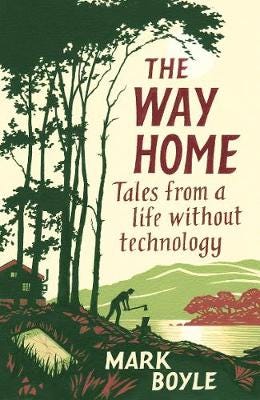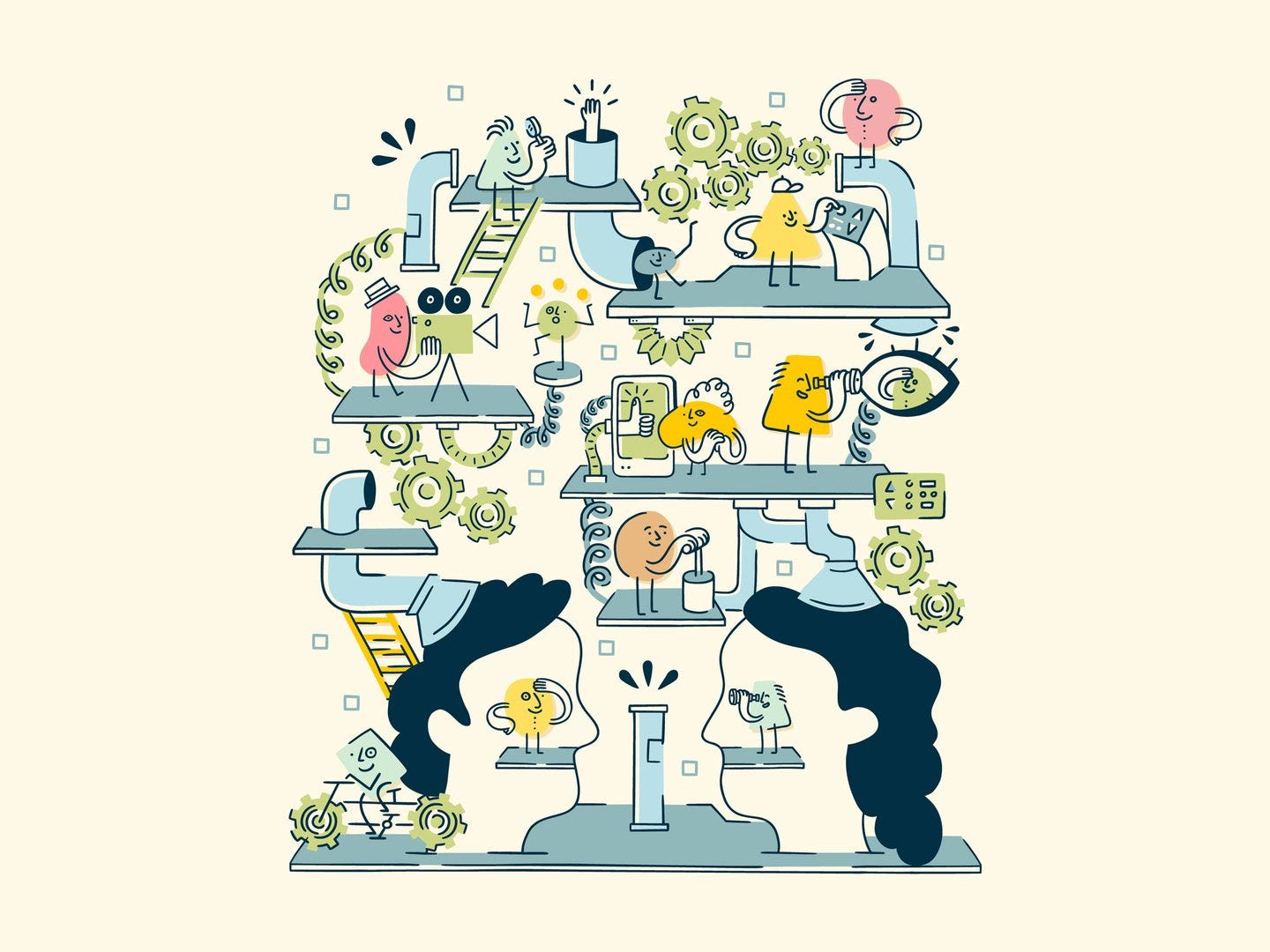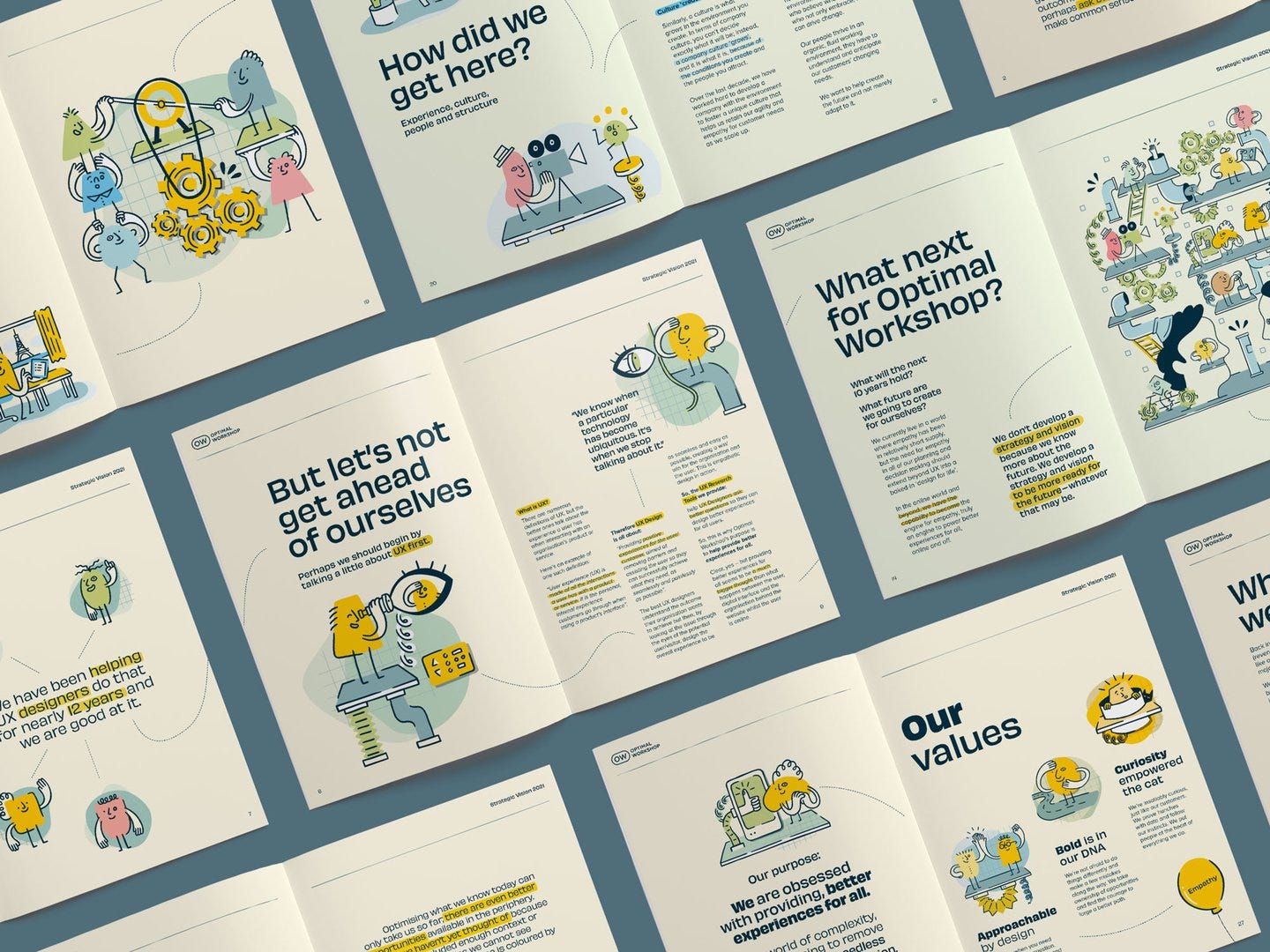12 January 2022. Machines | Design
Living beyond ‘technologies’ and machines | Building an ‘empathy engine’
Welcome to Just Two Things, which I try to publish daily, five days a week. Some links may also appear on my blog from time to time. Links to the main articles are in cross-heads as well as the story.
#1: Living beyond ‘technologies’ and machines
Quite early on in Mark Boyle’s book The Way Home, about living without what we might call modern technologies, he finds a dead pigeon by the road, recently killed. He takes it home, plucks it, guts it, and—concluding that it is less than one day dead—cooks it.
A page or so later, his partner says it would be nice to to have a hot tea in the morning without having to make up the fire, and he knocks up a rocket stove from an empty Guinness keg his neighbour has to hand and some lengths of pipe. (Rocket stove? Explained here).
He has, earlier, built from the ground up the cabin where they are both living.
As a reader, I’m not clear how he learned all of this, or remembers it, or whether it’s in one of the books he has.
Although the definition of ‘technologies’ is deliberately imprecise, it generally covers anything powered by electricity (so: no internet; no mobile phone; no television; no radio) and anything powered by petrol (no van).
When he wrote the book, in 2017, Boyle was in his late 30s, and had bought a smallholding in rural west Ireland on the proceeds of a previous book. He’s had some practice in removing himself from our industrial complex, since he had previously lived for a year without money. The book about that paid for the smallholding.
(Small amounts of money di change hands in The Way Home. He makes something from a column in The Guardian, written in pencil and delivered by post; there are occasional pints drunk at local bars.)
It is worth piecing together his explanation of what constitutes technology, as well as what it is he is trying to escape from:
Throughout most of my life, and for reasons that made perfect sense, I chose money and machines, unconsciously choosing to live without the things they replaced (My emphasis, p.xvii).
But defining what he means by the ‘machines’ that he is going to live without is a little fungible:
At the heart of how I live is the burning desire to discover what it might feel like to become a part of one’s landscape using only tools and technologies (which) do not make me beholden to institutions and forces that have no regard for the principles and values on which I wish to live my life (xviii)
In all of this it helps that Boyle, who is Irish, has chosen to live in a remote and rural part of Ireland. It was all he could afford, as he says early on, but it locates him at the fringes of the circuits of capital (not a phrase he’d use, to be honest) amongst a community where there’s quite a lot of self-help and mutual aid—and where people know each other. On the other hand, the pub in the area closes during the year, and the post office is likely to follow.
The disused Guinness keg is only one example of the detritus that his neighbours send his way. Later, for example, he gets some old floorboards, ripped out of a house that a builder neighbour has been renovating.
What we recover
The heart of the book, I’d say, is an exploration of what we recover, of those things we have lost, when living on the edges of late capitalist society. There’s a telling passage where he talks about his hay fever, crippling as a boy, temporarily cured in his 20s with a steroid injection. It turns out that broadleaf plantain is a natural anti-histamine that grows from May, and works as well as over-the-counter pharma alternatives he used to buy.
His desire to learn generally more about forgotten knowledge leads him to the Blasket Islands, now uninhabited. Through a quirk of history and anthropology, they are one of the best documented of societies living in a pre-industrial way anywhere in Europe. Passages about a trip he takes to the islands are spaced through the book. The fact that their way of life eventually broke down isn’t lost on him.
And at this point, it’s worth saying something about the style. It follows a year through the seasons, but it is episodic. Passages about the day to day work of the smallholding and interactions with neighbours are intercut with biographical passages that explain how he got here from where he started.
The story builds through these episodes. I assume that this is partly to do with the material conditions of production—easier to fit the writing of short instalments around the rhythms of physical work. But the montage effect it creates is more powerful than if it followed a more conventional narrative path.
Nature and its workings
The effect of all of this is to remind us—‘us’ as in the reader—of how little we now know of nature and its workings, and of our vast dependency on a system of global production and logistics that often has terrible effects on the people at the far end of the chain. And, given the rising tide of anti-depressants, maybe the effects aren’t that good for those of us consuming them.
In the book he describes the moment that this became important to him, when he was an ecological activist living on a houseboat in Bristol:
I had come to a point in my life when I wanted to have an economically dependent relationship with the people and landscapes around me, instead of one that was financially dependent on strangers halfway across the world. I wanted to take responsibility for my own material needs and to come face to face with the consequences of my actions. (172)
One effect is that he stops being a vegan—quite a lot of the book is about his trips fishing for pike. Another is that he becomes more conscious of the role of money in structuring that dependency:
Money enabled me to float around cities, enjoying the fruits of everything I didn’t like about the industrial world, without ever having to meet real life—blood, death, shit, dirt—on its own terms. (xxx)
And money also ties us in to technology in ways that are unhelpful, as he explains to a woman who asks about why he doesn’t have a van. As Boyle explains to her, it would take two or three months of work to pay for all the costs involved in running a van for a year. (This passage could come straight out of Ivan Illich, not mentioned in the bibliography, who seems like a fellow traveller in Boyle’s endeavour.)
Matters of degree
But at the same time, the bike he uses instead scrapes under the ‘machines’ threshold, with the acknowledgment that it is only a matter of ‘degree’ that separates it out from the van. Similarly, the pencil that he writes the book with is also only a matter of degree, and he muses, towards the end, of using quills and making his own ink and paper for the 20 or so letters he posts each week.
One of the other secrets here is that out there at the fringes Boyle is part of an “informal economy” (the word doesn’t seem right) of exchange. Of gifts, if you like. He runs one of the properties on the site as a free bothy, and although people are supposed to stay only a few days, some stay longer, like the Flandrian Gillis, who pops up to help with some of the more difficult jobs.
Similarly with neighbours—a couple of horses grazed in someone’s field is grazed for a session digging a nursery garden. But even putting it like this feels wrong, because it conveys a sense of transaction, when what people are actually doing is sharing their own surplus. An empty field that needs grazing, for a bit of muscle and a bit of time.
Early stage trends
From a futures perspective Boyle is interesting because he represents someone who seems in tune with early stage trends and makes them resonate. He built a successful sharing website in the early 2000s; he decided to live without money for a year just before the financial crisis; he bought his smallholding (on the proceeds of the book he wrote about living without money) well before the present enthusiasm for rewilding gathered momentum.
And perhaps the resonant thought for me from the book is the discussion of notions of ‘simplicity’, right at the end.
I took away a number of things from The Way Home. The first is that ‘degrees’ do matter. Yes, both cars and bikes, and pencils and word processors, come from industrial processes, but the impact of each of the former is vastly smaller than the latter, both when they are made and afterwards. Perhaps its power requirements that make the real difference.
The second is a strong sense of what I’d miss. I might be able to live without television and sport (although I’d miss films) and I’d certainly miss recorded music.
And the third: how remote my own life is from taking “responsibility for my own material needs”, and how unskilled I am for that life—to the point where even if I wanted to, or needed to, I’m not sure how I would acquire the skills I needed for it.
#2: Building an ‘empathy engine’
My attention was drawn to the ‘empathy engine’ shown in a piece on the design site It’s Nice That. It was created by a New Zealand design agency, Strategy Creative, for a user experience platform, Optimal Workshop. (Yes, all names become completely abstract as capitalism becomes more remote from actual objects).
(Image: Loryn Engelsman/Strategy Creative, via It’s Nice That)
The rationale for the empathy engine is that user experience is all about empathy, even if that’s not how most of us experience it most of the time.
Strategy Creative worked with illustrator Loryn Engelsman to produce a series of illustrations that showed “people working together within a machine to see the world through others’ eyes.”
The engine itself is broken down and explained in the overall strategy document developed for Optimal.
The drawings are charming, of course, but it’s striking that the only way to convey an experience that is increasingly abstract, and increasingly driven by algorithms, is to use cartoon characters in pastel shades. And don’t inspect the engine too closely. To this untrained eye, several of the connections seem to be missing.
(Image: Loryn Engelsman/Strategy Creative, via It’s Nice That)
j2t#241
If you are enjoying Just Two Things, please do send it on to a friend or colleague.





